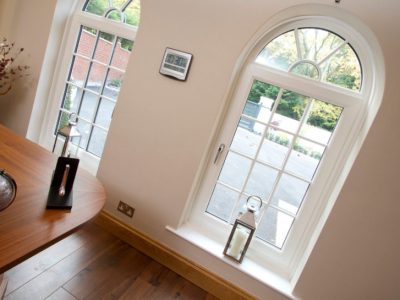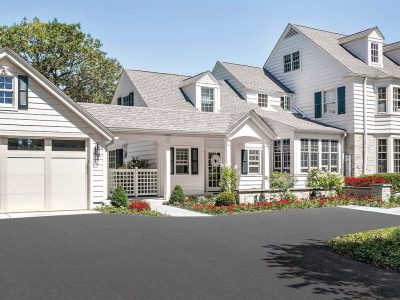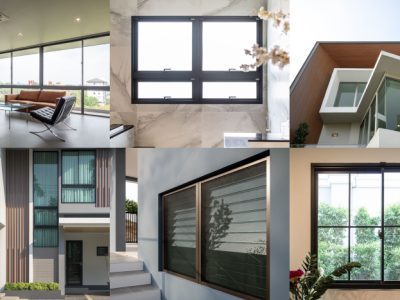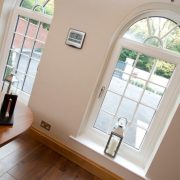Kitchen updates in Arlington Heights are shifting toward smart, design-forward refacing solutions that honor the quality of existing cabinetry while introducing a fresh look. Homeowners are discovering how a strategic change in door styles, finishes, and colors can modernize the space without the expense or disruption of a full tear-out. Refacing also opens the door to functional upgrades—soft-close hardware, organizational inserts, and lighting—that make daily life easier. If you’re browsing ideas or pricing, resources like https://kitchencabinetguys.net can help you understand what’s possible for your home and budget. The following sections explore the trends, materials, and layout strategies driving these stylish transformations throughout the neighborhood.
Choosing Door Styles and Finishes That Match 2025 Trends
2025 kitchen design is all about clean geometry, tactile finishes, and a sophisticated mix of modern and classic elements. In many Arlington Heights homes, Shaker doors remain a favorite, but with slimmer rails and stiles for a lighter, tailored look. Flat-slab doors with integrated finger pulls are gaining ground, lending a seamless appearance that pairs well with minimalist hardware. Textured woodgrains—especially rift-cut white oak and walnut—add warmth to contemporary spaces, while super-matte finishes reduce glare and fingerprints. Homeowners exploring Cabinet Refacing Arlington Heights appreciate how these door and finish updates can refresh the entire room without altering the floor plan.
Popular door profiles for a modern refresh
Expect to see more hybrid profiles that soften the transition between classic and contemporary, such as eased-edge Shaker or a narrow-bead frame with a flat center panel. For painted looks, ultra-durable conversion varnishes and waterborne polyurethanes are favored for their clarity and resistance to wear. If you prefer low-maintenance materials, thermally structured laminates and high-pressure laminates now offer convincing wood textures that feel authentic to the touch. You can also incorporate reeded or fluted glass in select upper cabinets to lighten visual weight and offer a hint of display storage. The key is to combine one expressive element—texture, glass, or hardware—with otherwise streamlined choices to achieve a balanced, long-lasting design.
Color Updates That Refresh Arlington Heights Kitchens
Color is the easiest way to move a kitchen into the present while honoring the architecture of an Arlington Heights home. Warmer whites, pale greige, and soft taupe create a cozy backdrop that plays well with natural stone and wood floors. For contrast, saturated earth tones—olive, clay, inky blue, and charcoal—anchor islands or lower runs of cabinetry without overwhelming the room. Two-tone schemes remain popular because they let you experiment with depth while keeping the space bright and airy. Many residents choosing Cabinet Refacing Arlington Heights find that updating color alone can make their lighting feel more intentional and their countertops appear new.
Two-tone palettes that age well
- Rift-cut white oak lowers with a warm off-white on uppers for a Scandinavian-inspired balance
- Muted sage lowers paired with a soft linen white, harmonizing with brushed brass or matte black hardware
- Inky navy or charcoal island contrasted with a creamy perimeter, echoing veining in quartz counters
- Greige perimeter with a walnut island for an elevated, transitional look that complements stainless appliances
When selecting colors, consider undertones in existing surfaces like floors and backsplash to avoid mismatches. Cooler lighting may make whites look blue, while warm bulbs can deepen earthy tones, so test colors under your actual fixtures at different times of day. A satin or matte sheen tends to conceal minor wear better than high gloss and delivers a refined, furniture-grade effect. If you’re weighing future resale value, aim for a neutral foundation and introduce bolder hues on the island or a standalone pantry cabinet. This approach offers personality without limiting buyer appeal down the road.
Maintaining Cabinet Strength Through Professional Refacing
Quality refacing begins with a structural check of your existing cabinet boxes—a step that determines whether reinforcement or minor repairs are needed before new doors and veneers are installed. Pros assess for squareness, secure attachment to studs, and the condition of face frames or frameless edges to ensure door alignment will be precise. They’ll also review shelf integrity, hinge boring, and drawer glide clearances to guarantee smooth operation post-upgrade. High-quality veneers or skins can be applied to both face frames and exposed sides, creating a seamless look that completely disguises the old finish. For many homeowners choosing Cabinet Refacing Arlington Heights, this professional groundwork delivers long-lasting results that feel as sturdy as new cabinetry.
What pros do to reinforce existing boxes
Refacing specialists often add hidden corner blocks, new fasteners, or plywood end panels to shore up boxes before installing new fronts. Surfaces are degreased, sanded, and primed for a strong mechanical and chemical bond with adhesives designed for long-term use. Edges receive matching banding to create crisp, durable lines, and any out-of-square frames are shimmed so doors hang evenly. Upgraded hardware—soft-close hinges, under-mount drawer slides, and adjustable shelf pins—enhances daily performance and protects finishes from wear. If you’re exploring options or scheduling an in-home assessment, browsing https://kitchencabinetguys.net is a simple way to see how reinforcement and finish upgrades come together within a typical refacing project.
Cost-Effective Alternatives to Full Cabinet Replacement
Refacing typically costs 40–60% less than full replacement, especially when your existing layout works and the cabinet boxes are structurally sound. Because you’re not demolishing and rebuilding, labor hours drop, trades overlap less, and you avoid many ancillary expenses like electrical relocation or flooring patching. The timeline is shorter—often measured in days rather than weeks—reducing disruption and takeout meals. For homeowners planning to sell in a few years, refacing can deliver a strong return by modernizing the kitchen’s first impression without overcapitalizing. That’s why many people who research Cabinet Refacing Arlington Heights ultimately decide to invest in door style, finish, and functionality upgrades rather than starting from scratch.
Smart upgrades to pair with refacing
- Replace outdated drawer boxes with dovetailed, full-extension, soft-close designs
- Add pull-out trays, spice pull-outs, and tray dividers to improve organization
- Integrate LED tape lighting under cabinets and inside glass uppers for ambiance and task light
- Cap wall cabinets with crown molding and update toe kicks for a built-in, furniture-grade look
- Include matching appliance panels or a paneled hood to unify your palette
When budgeting, remember that the most noticeable changes usually come from what you see and touch daily—doors, drawer fronts, and hardware—while interior upgrades amplify usability. Prioritize storage solutions that solve persistent pain points, like deep pots, hidden trash, or baking sheets. You can also phase improvements by addressing doors and color first, then layering in inserts or lighting later. This flexible approach keeps costs manageable and aligns upgrades with how you use the kitchen over time. In the end, you get a kitchen that looks new and works better, without the stress of a full gut.
Sustainable Materials Supporting Modern Home Design
Refacing is inherently sustainable because it preserves the bulk of your existing cabinetry, dramatically reducing landfill waste and the embodied carbon of new box construction. Many modern veneer and finish options meet strict emissions standards, with low- or no-VOC adhesives and CARB-compliant materials that maintain healthy indoor air quality. FSC-certified woods and rapidly renewable species like bamboo offer eco-conscious alternatives that don’t sacrifice beauty or longevity. Waterborne finishes and UV-cured topcoats further cut down on off-gassing while delivering the durability a busy family kitchen demands. When combined, these choices allow you to update style and function while leaving a lighter environmental footprint.
Eco-friendly surfaces that stand up to daily life
Today’s sustainable surfaces are engineered to handle spills, impacts, and frequent cleaning without fading or peeling. Textured laminates and thermally structured surfaces resist scratches and fingerprints, making them ideal for high-traffic homes. Rift-cut oak and maple—with clear, low-VOC finishes—bring natural warmth while remaining easy to maintain with mild soap and water. For painted looks, waterborne lacquer systems cure hard and cleanly, standing up to everyday abrasion better than older coatings. If sustainability drives your decision-making, you can also request documentation for recycled content, emissions certifications, and take-back or recycling programs for packaging and old doors.
Custom Refacing Options Tailored to Various Layouts
Every kitchen layout presents unique opportunities for improvement, and refacing adapts smoothly whether you have a galley, L-shaped, U-shaped, or open-concept plan. In a galley, swapping hinged doors for deep drawers on the lowers can dramatically improve access and flow without altering walls. U-shaped kitchens benefit from consistent door profiles and color to visually connect multiple corners, while an accent island color adds dynamic contrast. For open-concept homes, panel-ready appliance fronts and finished cabinet ends create a polished, furniture-like presence facing the living areas. Thoughtful detailing ensures the kitchen feels integrated with adjacent rooms, and a tailored plan helps you avoid visual clutter or awkward transitions.
Design details that make layouts work harder
Corner solutions like blind-corner pull-outs, LeMans trays, or a diagonal cabinet with glass doors can reclaim space that typically gets wasted. Tall pull-out pantries, tray dividers above a wall oven, and toe-kick drawers multiply storage without increasing the footprint. Integrated trash and recycling centers simplify cleanup and protect newly finished doors from frequent contact. If you’re moving to a two-tone scheme, use the darker shade on the longest run or the island to ground the room and keep sightlines open. For a seamless process from idea to installation, local homeowners often review portfolios, finishes, and scheduling options on sites like https://kitchencabinetguys.net, then request a measure to translate design preferences into a precise, buildable plan.













Comments